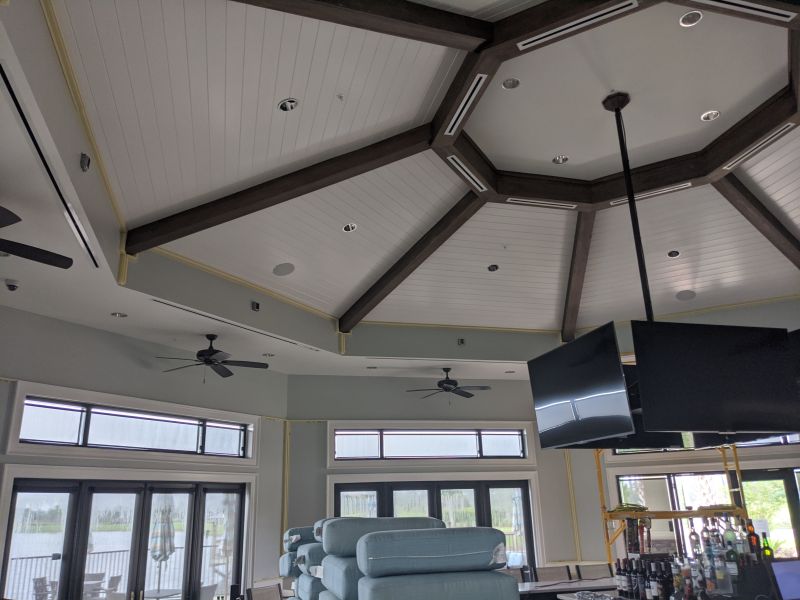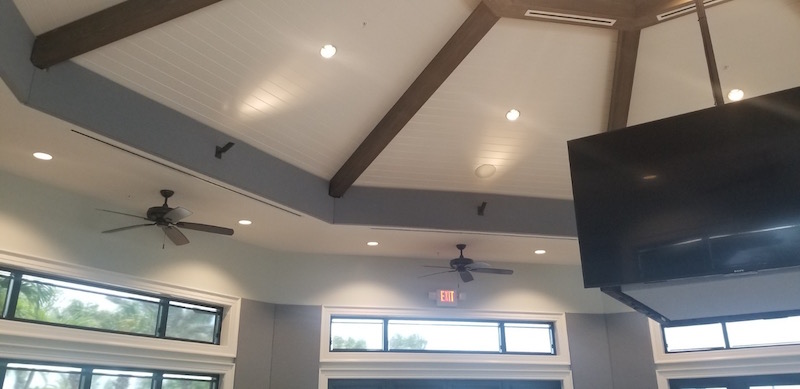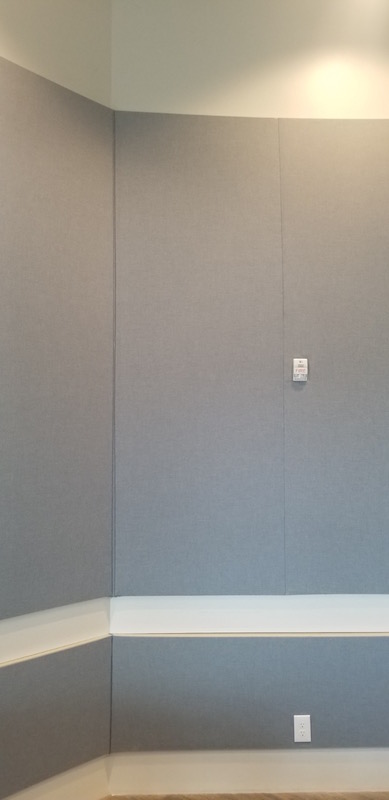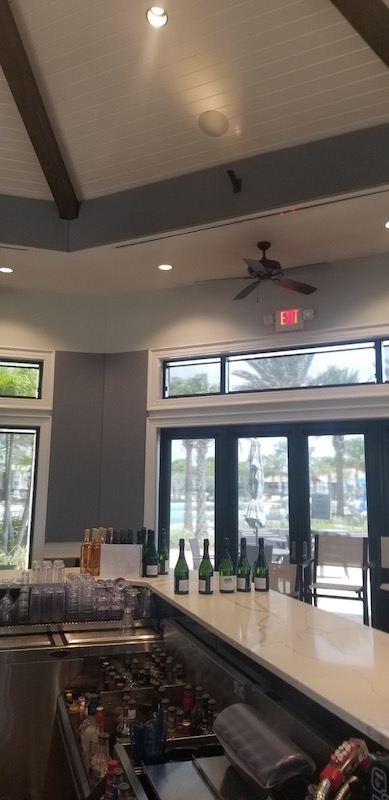Del Webb Lakewood Ranch is a 55+ community in Florida, with a 21,000 square foot clubhouse in the center of the neighborhood. Residents in the community enjoy activities there such as bocce ball, swimming, arts and crafts, and dining at the bar & grill. The restaurant had been receiving complaints from guests about the noise levels, especially during the busier hours. Echo is a common clubhouse issue that is often easily treated by the addition of an acoustic treatment system.
The restaurant manager contacted Commercial Acoustics to perform a reverb test and to help figure out a solution to help with noise reduction in the clubhouse restaurant. The reverb time test resulted in an initial RT60 of 1.75. Target reverb time in a restaurant should be between 0.6 seconds and 1.0 second, 0.6 is more appropriate for fine dining while more casual restaurant should be around 1.0.

Clubhouse Noise Reduction
In this space, the large glass windows, high ceilings and hardwood floors contributed to the high RT60. With limited wall space available the team needed to maximize the amount of acoustic material that could be used in the space. In reality, they needed panels that would bump right up next to each other, so the proposed solution was acoustic fabric wall to help with noise reduction.
The Commercial Acoustics Team came in and installed 2″ thick 6 pcf fiberglass before wrapping it in Guilford of Maine acoustical fabric. Guilford of Maine FR701 is used in many assembly spaces with strict fire code, but all Acoustic Fabrics provided on our Commercial Acoustics Sound Absorbing panels are Class A for flame spread and smoke index).
The fabric wall was installed on all 8 walls in the octagonal shaped space, and along the fascia. In all, the installation took around 5 days, so the team could cover all available wall space in acoustic fabric wall. The result was a very significant reduction in RT60, bringing it down to 1 second from 1.75 seconds.

Fabric stretched panels are required when outlets or other penetrations are present on a wall. 
Fabric may stretch vertically along the walls or horizontally along the soffits above.
Benefit of Fabric Wall for Clubhouses
Acoustic fabric wall allows for a continuous look, and is the best option when the client desires a floor-to-ceiling design with their acoustic panels. With fabric wall, the raw fiberglass is attached to the wall to created “one” large acoustical surface. Using a track system, acoustically transparent fabric is fastened over the fiberglass and results in an acoustic fabric wall. For more information on fabric wall and other acoustic treatments, see our article on When to Use Sound Absorbing Panels.
When considering acoustic panels or fabric walls for your clubhouse, be sure to use the Acoustic Calculator to determine how many square feet of acoustic treatment is needed. Contact Commercial Acoustics if design assistance is needed



